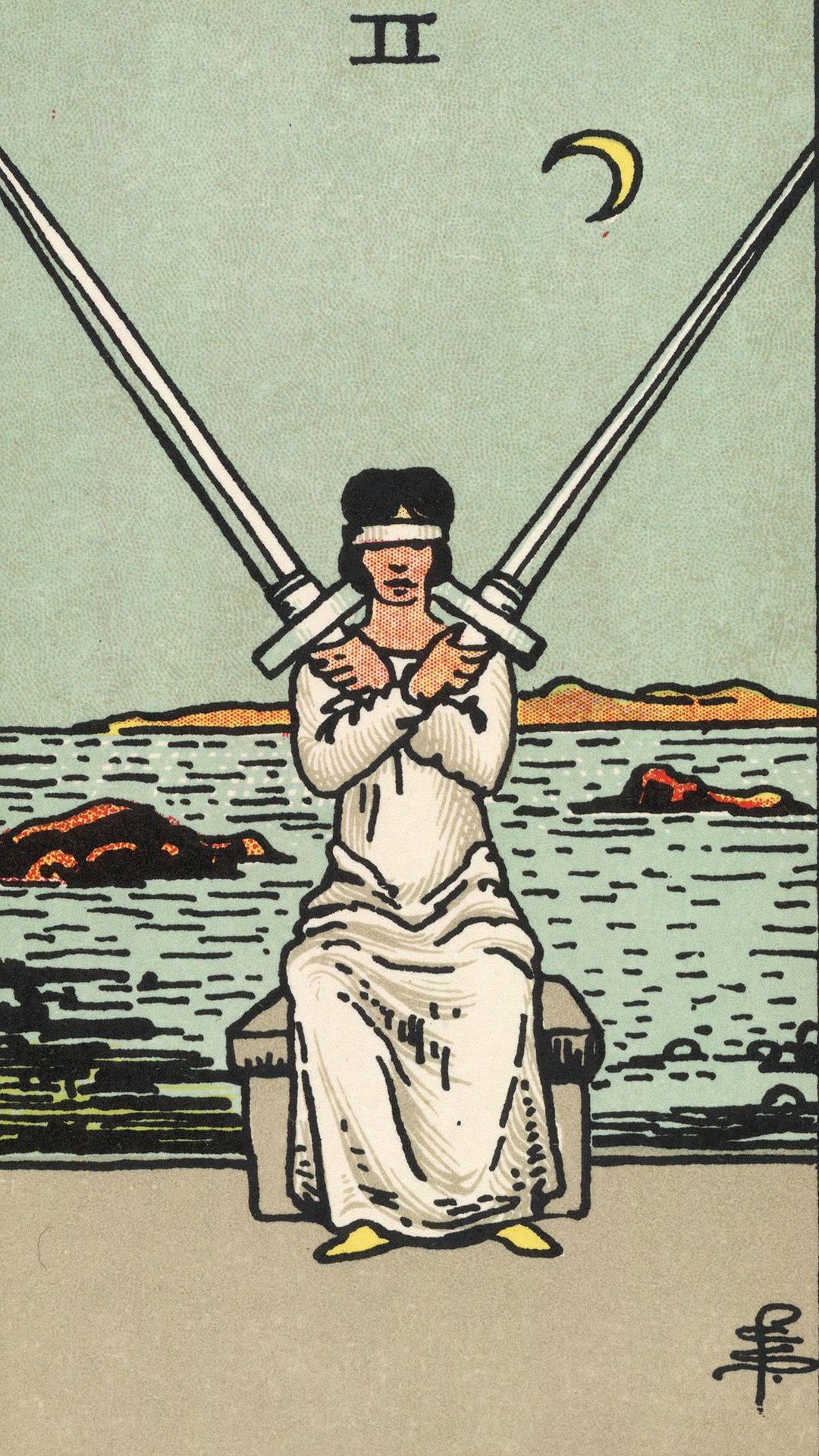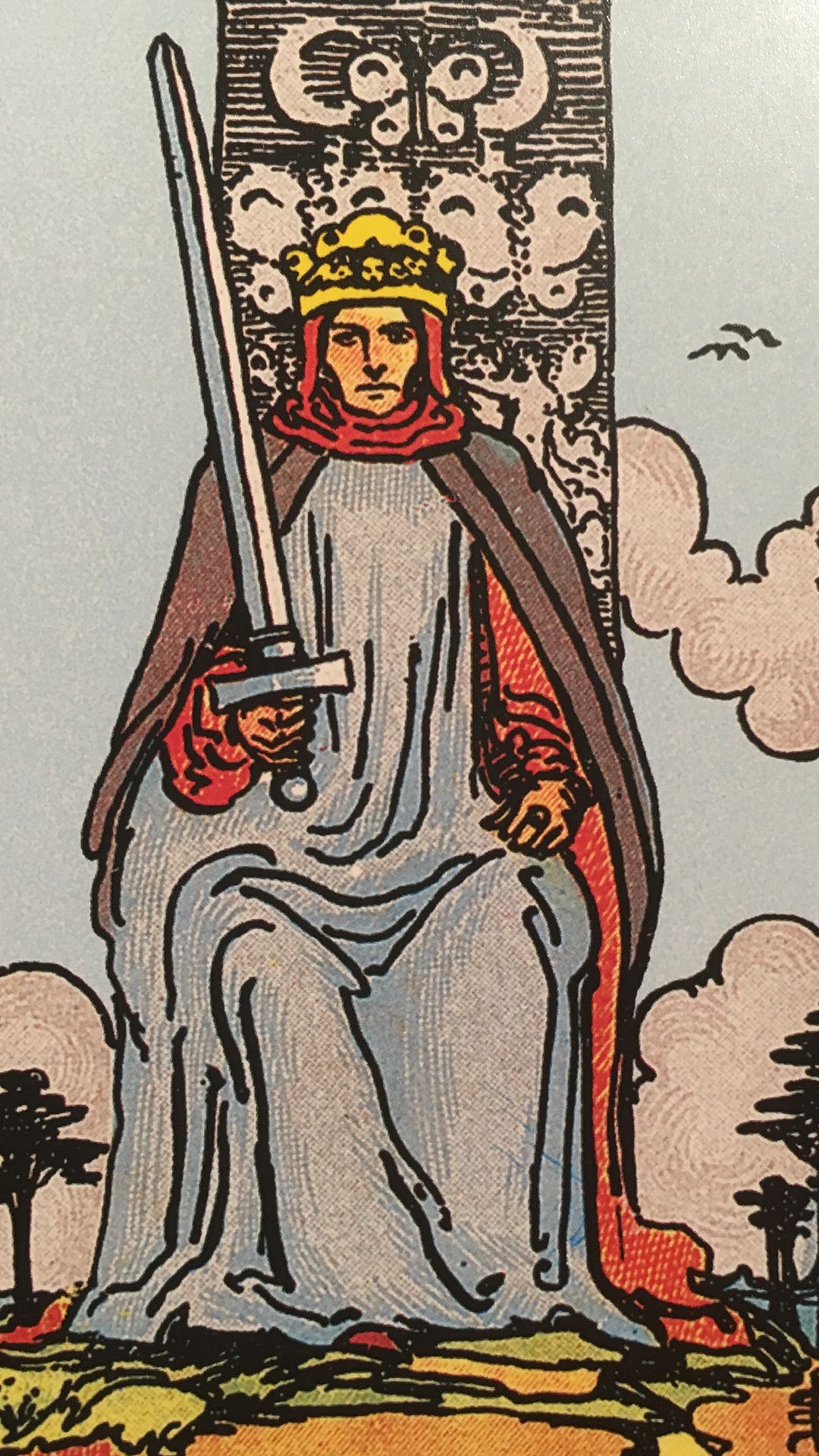Combination of card Two of Swords and card King of Swords
The King of Swords upright embodies cold logic and razor-sharp analysis, while the Two of Swords points to finding balance between opposing forces. This combo demands a rational approach without sacrificing harmony. Think master chess player – you need to coolly calculate every move while keeping your eye on the endgame.
Combination of reversed card Two of Swords and card King of Swords
King of Swords upright meets reversed Two of Swords, and here's what happens: even the sharpest mind hits a wall when inner conflict takes over. Your analytical superpowers are basically useless because you're paralyzed by indecision. It's like staring at a menu knowing exactly what's good but somehow still unable to pick – logic says both options work, but something's blocking you from pulling the trigger.
Combination of card Two of Swords and reversed card King of Swords
Reversed King of Swords paired with upright Two of Swords screams intellectual bullying that kills any chance of balance. You're trying to logic your way into control, but you've gone full dictator mode. Picture that chess player so obsessed with their brilliant strategy they completely miss the opponent's checkmate setup – overconfidence becomes your downfall.
Combination of reversed card Two of Swords and reversed card King of Swords
Both cards reversed? You've got a perfect storm brewing. The King's twisted logic crashes head-first into the Two's decision paralysis, creating pure chaos. You're like someone frantically grabbing at every solution that pops up but never actually committing to any of them – just burning through energy with nothing to show for it.

